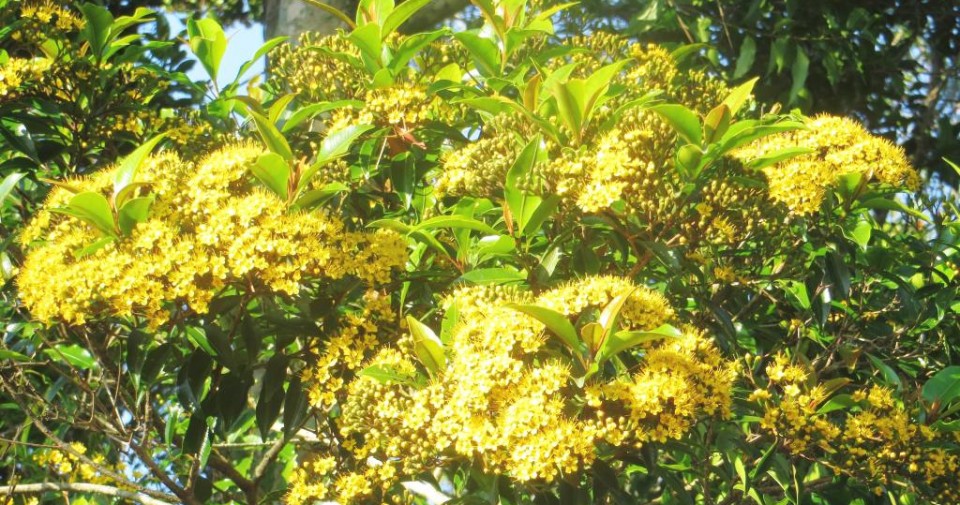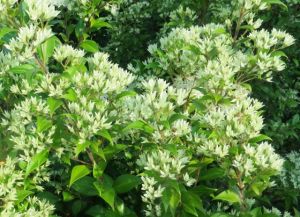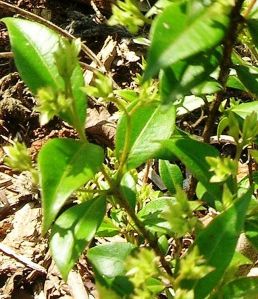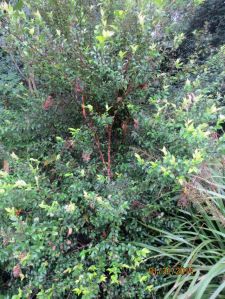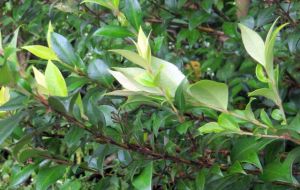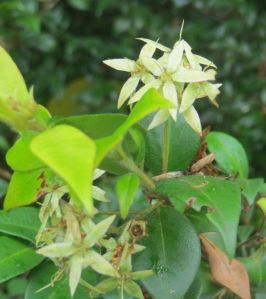The other myrtle – Backhousia myrtifolia
Leave a commentMarch 26, 2014 by Tamborine Dreamer
Backhousia myrtifolia
Grey Myrtle, Ironwood, Carrol
Family Myrtaceae
Grey Myrtle (Backhousia myrtifolia) is less well-known in cultivation than its slightly flashier sister the Lemon Myrtle (Backhouia citriodora) but it is just as useful a garden plant.
In the rainforest it is an understorey plant known to farmers clearing land as “Ironwood” (along with many other plants!) because it was so resistant to the axe. When it IS cut, however, the tough timber can be used for all sorts of purposes including cupboard and drawer handles, spoons and ladles, and tool handles.
Height: Up to 7m but usually smaller and denser in cultivation
Trunk: Greyish-brown and very rough and scaly, becoming fissured with age
Leaves: Small (to 7 cm), neat, elliptic but often ovate when young, light and bright green that darkens with age, long point, many lateral veins and oil dots. Leaves have a spicy smell when crushed.
Flowers: In summer. Creamy white and tiny with conspicuous stamens that give a “fluffy” appearance when in full bloom. Flowers are surrounded by five larger sepals in the same colour.
Fruit: Tiny pointed capsule
Range: South-eastern NSW to Harvey Bay, especially along watercourses
IN THE GARDEN
A neat shrub or small tree that performs well in most soils and tough conditions. Will tolerate long periods without rain provided it gets a good watering in summer. Useful hedging plant. Regular watering in dry times will promote bushiness and so will regular trimming. It’s quite at home in the shade but grows faster, flowers better and remains more compact when planted in full sun.
PROPAGATION: Seeds appear in autumn and germinate readily, with the first shoots appearing within a couple of weeks. Cuttings strike easily.
